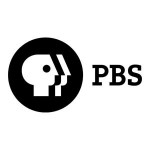
Rather than make this a conversation about content or political points of view, let’s look at the state of global one-to-many communication and think about how technology might serve Public Broadcasting.
I have listened (and been drawn into) many cocktail conversations debating whether or not Public Broadcasting should be an Internet-only service. It’s a favorite subject of people who have a specific political point of view. Up till very recently, this argument was pointless and moot. Today, it needs to be discussed – but in a slightly different way.
Public Broadcasting needs three more years of government funding. Within three years, Interned-connected television sets will reach a critical mass in households that make up (demographically speaking) the vast majority of the Public Broadcasting audience. Creating a functional “best available screen” Public Broadcasting experience will take about the same three years. It will also take about three years for all of the PBS “lifers” to be replaced with younger, smarter, more ambitious, more technically open-minded employees. It will also take about three years to create a new business model that will allow non-profit and not-for-profit content distribution companies to thrive in the 21st century.
Three more years of funding for Public Broadcasting is a rounding error to the Federal Budget, but it is an extension that will mean the difference between life and death for this wonderful 20th century media experiment.
Would an online, broadband, app-centric, wireless, wired, fixed wireless, over-the-top, IPTV, Internet-Television, 4G, WiMax, Digital Tier ATSC, MSO Public Channel, LPTV, Web, Blog, Twitter, Facebook, YouTube, Social Media-ized version of Public Broadcasting work? If it can’t – then the content and the concept is not worthy of survival.
But here’s the thing – this can’t happen overnight! You could argue that Public Broadcasting should have seen this coming and should have been getting ready to enter a new world of profitable online content distribution – but they didn’t. They (like every other broadcaster) have stuck to the “big money” model and let every other form of distribution be a “nice to have.” If there is a reason for Public Broadcasting to exist – then we need to give it three years to solve a 21st century problem with a 21st century solution.
Why three years? It’s an arbitrary number, but – if you calculate the rate of consumer adoption of hardware, the speed with which 4G wireless networks are being deployed, the power of the new consumer electronics devices (from TVs to Handhelds) and the new consumer media consumption paradigm: People are taking their TVs with them – three years sounds about right.
Thirty-six months from now there will be over 50 million Internet-connected TVs in the United States alone. We will have a robust 4G network. Anyone who wants a tablet computer (iPad, Xoom, Galaxy Tab, etc.) will have one. And, most importantly, there will only be two kinds of people and two kinds of devices on earth: Connected and Not Connected.
In a world where everyone Public Broadcasting needs to reach is connected – Public Broadcasting should be able to thrive without government funding. The content will find an audience and … a business model always follows an audience.
Should the new face of Public Broadcasting be broadcast TV-centric? Probably not. A highly educated, highly mobile audience no longer watches appointment television. They don’t have to. Since Public Broadcasting offers almost no emergent content (except for news), there is no reason to rely so heavily on linear programming. Even current cable PPV models would be suitable, if the content can find an audience.
Lastly, over a three-year period, Public Broadcasting will be able to lean on potential sponsors for underwriting. And that’s probably what it will do. I don’t expect Public Broadcasting to wake up and join the 21st century. I do expect that if we were to extend Public Broadcasting’s funding for three years, it would use that time to find a way to pay for itself.
While I agree that the $400ish million dollars of taxpayer money might be put to better use right now, Washington has a proven track record of wasting money on all kinds of less important stuff. And, while I also agree that the Public Broadcasting is badly broken and severely out-of-date, I believe that it is important enough to be given a fighting chance. Whether you agree with me or not, please contact your elected officials and let them know how you feel. This is “our” Public Broadcasting system and we should make sure that the Leadership hears what we have to say. ![]()
[widgets_on_pages]
